Ertach Kernow - Cornish emigration to Australia
Cornish emigration came to mind perhaps brought on by watching the 1999 television adaptation of Charles Dickins novel David Copperfield. The villainous, but ever so humble, Uriah Heep is transported as a convict and the heroic, but financially inept Wilkins Micawber and his family emigrate to Australia leading to a successful life there. I was further prompted by adding a number of newsletters from Australian Cornish associations to the website.
Transportation of convicts began with what was known as the First Fleet of eleven vessels leaving Britain in May 1787 and arriving in Australia in January 1788. All together out of some 162,000 convict transportations to Australia 600 were from Cornwall. Although Cornish folk convicted of crimes, most we would consider today quite minor, were sent to Australia the vast majority were those who left to find a living and a better life. Australia was just one of the many destinations to which people from Cornwall travelled, whose descendants now make up the over six million people of the worldwide Cornish Diaspora. With Cornish associations in many countries worldwide and hundreds of visitors to Cornwall each year searching family roots, there is great pride in having Cornish ancestry.
One recent high-profile visitor searching his Cornish roots was former Australian Liberal Party Prime Minister Scott Morrison, during the G7 summit. Like about twenty percent of modern Australians who have convict ancestors, Scott Morrison can trace his Cornish roots back to William Roberts born in St Kevern in 1755, transported for stealing yarn from William Moffatt of Launceston. Roberts like many convicts once their period of transportation was concluded, in his case seven years, stayed on in Australia married and raised families. Morrison was not the only world famous Australian with Cornish ancestry.
John Sampson was born in Phillack, Cornwall in 1808 to William and Elizabeth marrying Catherine Williams of Breage in 1832. Their second son John married Mary Jane Organ in 1854 emigrating shortly afterwards, like many people from Cornwall joining the Australian Gold Rush. Their first son Stephen was born in 1856 and six other children would follow. Sadly, Mary Jane died in 1871 and John would later remarry Priscilla Ann Judd and had a further two children. John became well known in local politics in Ballarat becoming co-founder and first president of the Creswick Miners' Association, later treasurer for the Amalgamated Miners' Association. The Adelaide Daily Herald reported John Sampson’s death on Wednesday 9th April 1913 describing him as one of the early pioneers of Ballarat. Four of his sons held important local and federal jobs, but it was his daughter Kate who would be John’s link to his most important descendent Robert Gordon Menzies born in 1894. This grandson of ordinary Cornish emigrees would become one of the most significant politicians in Australian history serving as Prime Minister for a total of over eighteen years. As founder of the Liberal Party in 1945 Menzies led the party to victory in 1949 which then remained in government for the next 23 years, Sir Robert stepping down as Prime Minister in 1966. He was knighted by Queen Elizabeth in 1977 and received many honours. On 15th May 1978 whilst reading, Menzies died of a heart attack and received a state funeral, one of the largest ever held in Australia, attended by the then Prince Charles, representing Queen Elizabeth. A memorial service was later held in Westminster Abbey. Queen Elizabeth said on the death of Sir Robert, ‘I was distressed to hear of the death of Sir Robert Menzies. He was a distinguished Australian whose contribution to his country and the Commonwealth will long be remembered.’
Quite a result for a Cornish family to have a descendent born just forty years after their arrival in Australia to reach such heights of national and world acclaim. The family are remembered on a blue plaque in Penzance which says ‘John and Catherine Sampson lived near this site in 1840. Their son John Sampson and his wife Mary emigrated to Australia in 1854. Great-grandson and grandson Robert Menzies was Prime Minister of Australia from 1939-1941 and 1949-1966.’
Not to be outdone by the Liberal Party of Australia’s two Prime Ministers of Cornish descent, the Australian Labor Party also had a Prime Minister who was part of the Cornish Diaspora. Robert James Lee Hawke, better known as Bob Hawke, was born to Clem Hawke in 1929. The Hawke family journey in Australia started when James Renfrey Hawke born at Kea in 1837 emigrated aged just 14 in 1851. In 1859 he married Elizabeth Trewartha daughter of Elisha Trewartha and Elizabeth Moyle of Redruth, and they would go on to have eight children. James Renfrey Hawke (jnr) who was born in 1862, married Elizabeth Pascoe daughter of John Pascoe born in 1837 at Mawnan and Ann Dalbridge born in Truro in 1841. They would be the grandparents of Bob Hawke through his son Arthur Clarence (Clem). Bob Hawkes mother and wife to Clem, Edith Emily Lee, also came from good Cornish stock whose ancestors came from Redruth and Tywardreath. Benefiting the Cornish community in Australia Bob Hawke was credited by Cornish historian and author A L Rowse with the reinvigoration of academic interest in the Cornish in Australia. As Labor Party leader Bob Hawke won four consecutive elections leading to a decade of economic and social reform.
Three Cornish families whose descendants achieved the highest political office in Australia are just the tip of the iceberg. It is estimated that over four percent of Australians are part of the Cornish Diaspora and the fifth largest ethnic group in Australia. Quite a feat given the relatively small size and population of Cornwall over the past centuries since the founding of Australia.
Just as the forced transportation of convicts to Australia was ending in 1868 a new scheme was in the offing here in Britain. The Child Migration Programme ran from 1869 and in reality a continuation of earlier actions where children, usually orphaned were sent to the colonies. Between 1869 and the end nearly 100 years later over 100,000 children were forced, or persuaded with the notion of better lives, to be transported. It turned out a great many of the children sent suffered abuse and horrific lives, often treated no better than slaves. The then Cornwall County Council approved the practice of sending children abroad, notwithstanding several government reports discredited child migration. They were the last authority to send children abroad after the apparent ending of the scheme in 1967. In 1970 Cornwall council agreed to send two brothers Rex (10) and Kevin (7) Wade to Australia to be fostered. There they suffered physical and mental torment at the hands of people who were expected to care for them. This is a stain on Cornwall and a fight for compensation is ongoing against the Westminster government. Rex and Kevin’s story can be read in ‘The Last Orphan; When a journey of hope turns into a nightmare’. The new unitary authority Cornwall Council said the migration was a ‘sad and highly emotive chapter in the country's history’.
Fortunately, there is much to be positive about Cornwall’s connections with Australia, Cornish culture remaining important in the lives of tens of thousands of people. Between 15th and 21st May 2023, Kernewek Lowender the Copper Coast Cornish Festival marks its 50th anniversary year. Covering the towns of Kadina, Moonta and Wallaroo residents and around 50,000 thousand anticipated visitors will celebrate the traditions, culture, and heritage of their Cornish ancestors. Besides many general events there are speciality Cornish classes in Kernewek, pasty making, traditional Cornish cooking, a Furry Dance and a Gathering of Bard’s, which follows that of the Gorsedh Kernow Esedhvos in Cornwall. A large parade will be sporting plenty of Cornish tartan, banners and of course the Baner Sen Peren, Cornwall’s national flag.
Cornwall receives numerous visitors from around the world looking for their Cornish roots, this is good for our local economy and heritage sector. Many of these are from Australia, one I remember well came looking for a humble cottage that belonged to their Nankivell ancestors. Agreeing to investigate I asked for them to return the following day. As often happens their family researcher had made errors and what they eventually were presented with was far more exciting. Scions of a wealthy merchant family with strong local political connections in Truro, including mayors and aldermen, they lived at Mithian House, now the Rose in Vale Country Hotel near St Agnes. It was their ancestor Mary Giddy, married to Thomas Nankivell, who first spotted the artistic talent of renowned 18th century portrait artist John Opie known as the Cornish Wonder. Something as part of their family history to be proud of.
Long may Cornwall share its culture with Australia and it’s Cornish Diaspora. Many Cornish people in recent times have emigrated to parts of Australia and connections are now far better through digital technology such as Zoom. Cornish towns have twinned with those in Australia including Helston with Port Augusta in South Australia, Launceston in Cornwall with Launceston in Tasmania, Penzance with Bendigo in Victoria and St Just in Penwith with Goyder in South Australia. Perhaps further links can be established, especially those with shared cultural
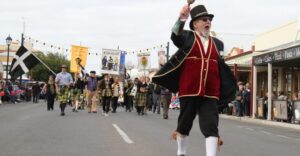
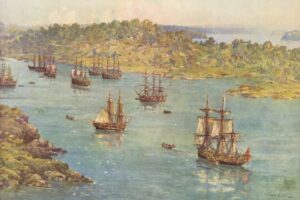
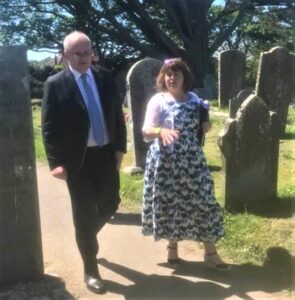
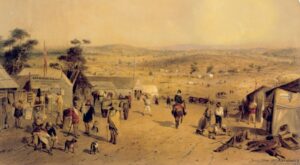
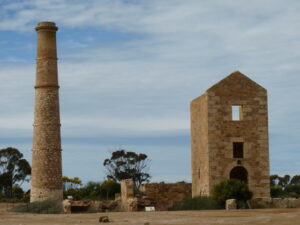
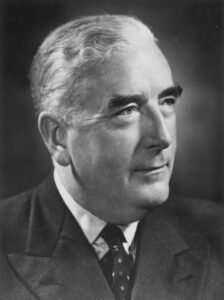
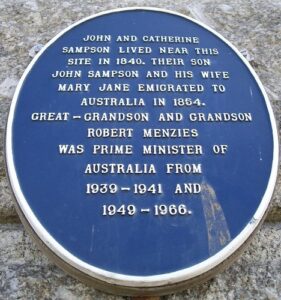

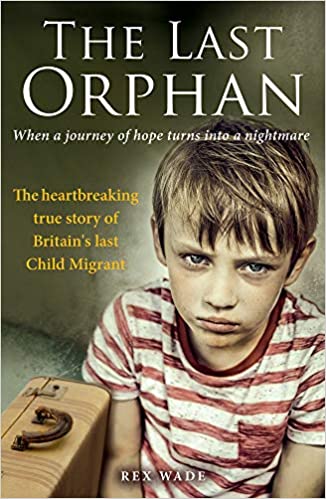
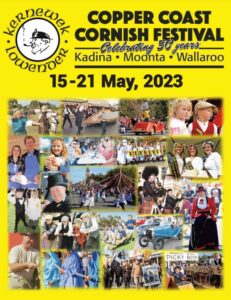
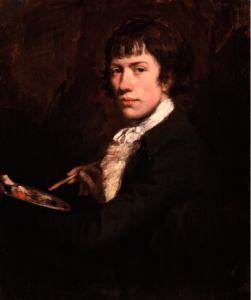
![Ertach Kernow - 17.05.2023 [1] Cornish emigration to Australia](https://www.cornwallheritage.com/wp-content/uploads/2023/05/Ertach-Kernow-17.05.2023-1-254x300.jpg)
![Ertach Kernow - 17.05.2023 [2] Cornish emigration to Australia](https://www.cornwallheritage.com/wp-content/uploads/2023/05/Ertach-Kernow-17.05.2023-2-254x300.jpg)
![[151] Ertach Kernow Heritage Column - 17th May 2023 - Heritage Group Activities Ertach Kernow Heritage Column - 17th May 2023 - Heritage Group Activities](https://www.cornwallheritage.com/wp-content/uploads/2023/05/151-Ertach-Kernow-Heritage-Column-17th-May-2023-Heritage-Group-Activities-285x300.jpg)